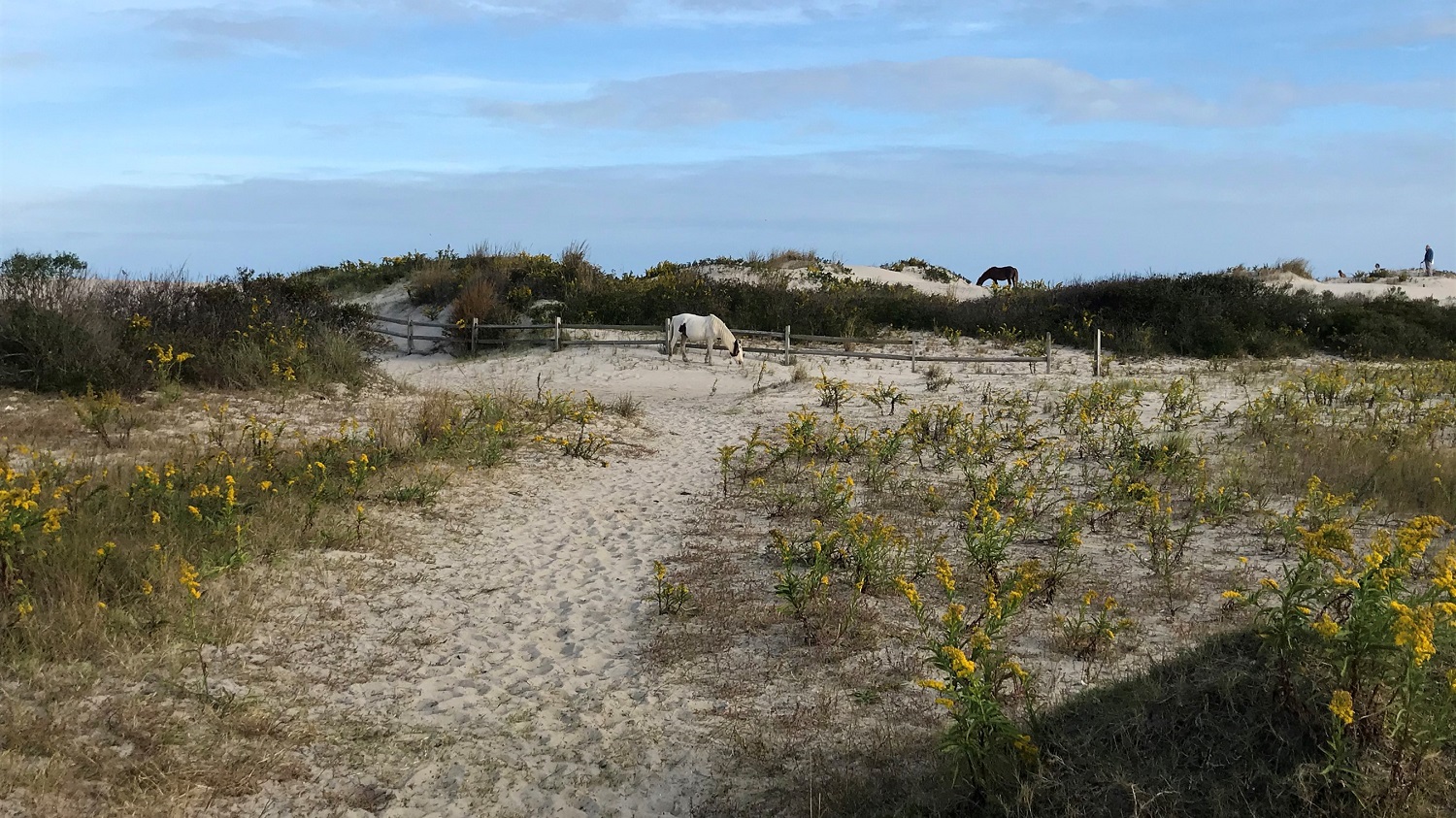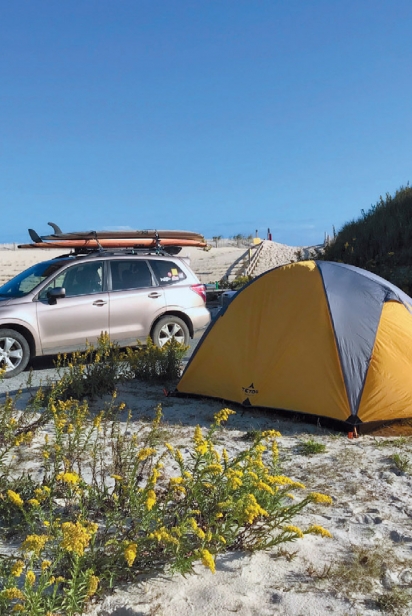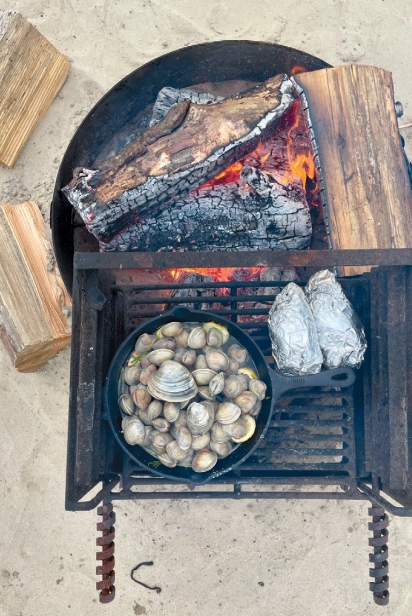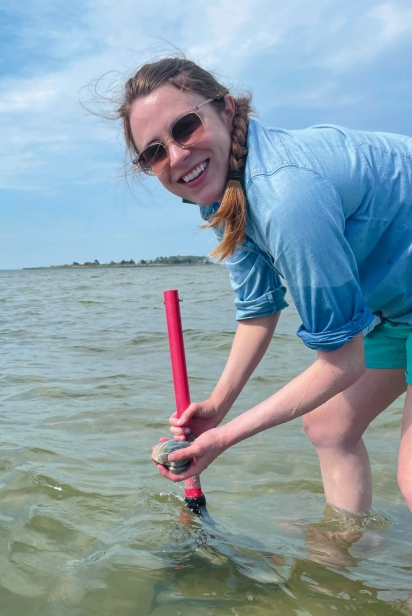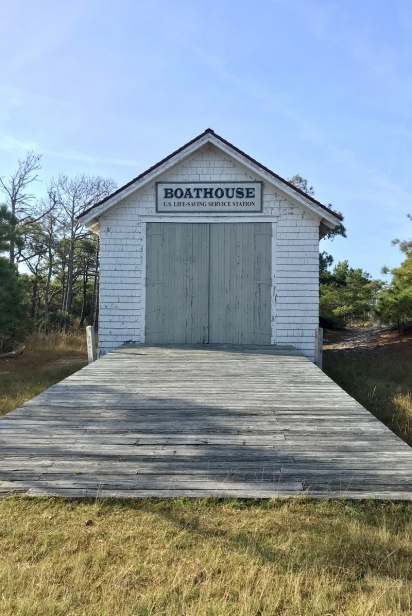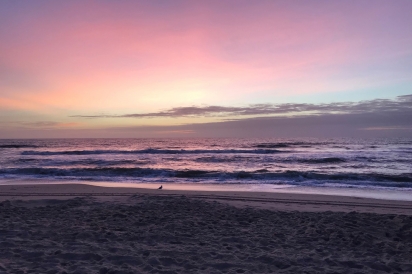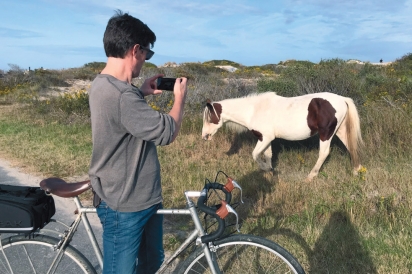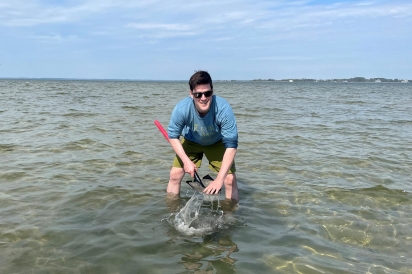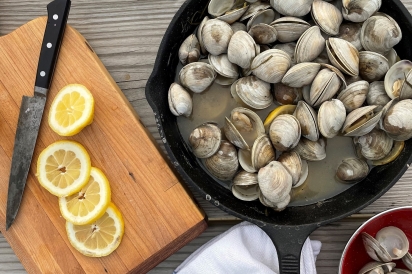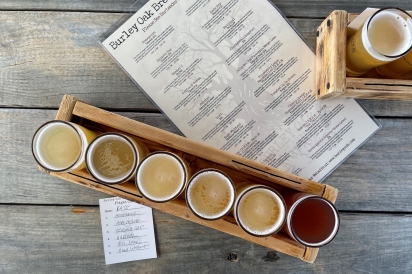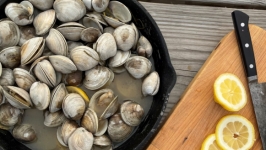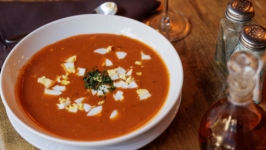Wild, Windswept Assateague Island
Down where the end of Maryland’s Eastern Shore dissolves into Virginia, where the land is a slender, sandy finger pointing south to the mouth of the Chesapeake Bay, you reach Assateague Island. Truly the ends of the earth, this depopulated island is ruled by wild ponies and migratory shorebirds. Just 20 minutes south of the high rises and soft serve of Ocean City, Maryland, Assateague’s wind-sculpted dunes and salt meadows are a startling, refreshing contrast. Best in the shoulder seasons, when the sunrises are cool and the summer crowds thin, Assateague is one of Delmarva’s most unforgettable destinations. Pitch a tent for a few nights between the stars and the sand, and get ready to explore one of the region’s wildest places.
ALL ABOUT ASSATEAGUE
Assateague Island is a Johnny-come-lately to the Delmarva landscape. Calved from Fenwick Island during a massive storm in 1933 that opened a new inlet, today Assateague Island is 37 miles long. It straddles the Maryland/Virginia state line, forming a thin barrier between the Atlantic Ocean on its eastern shoreline and the coastal bays on its western, marshy side. Assateague Island State Park and the Assateague National Seashore are accessible on its northern, Maryland end via the small town of Berlin. The southern end of the island is accessible through the Virginia town of Chincoteague, where a bridge connects visitors to the Chincoteague National Wildlife Refuge.
Importantly, the length of Assateague Island is home to an extraordinary population of tough wild horses. According to local folklore (and, of course, Misty of Chincoteague), they are the descendants of shipwrecked horses that swam to safety on the Virginia coast centuries ago. Today, there are two main herds, separated by a fence at the state line. The Maryland herd is managed by the National Park Service, while the Virginia herd is maintained by the Chincoteague Volunteer Fire Department, which also runs the annual Pony Penning Festival. Small bands of ponies roam the island at will, browsing salt meadow hay and traversing through the goldenrod.
In the long, highly populated stretch of beach towns from Lewes to Ocean City, Assateague is the coda, seemingly untouched by modernity or development. It wasn’t always this way. In the late 19th and early 20th century there were several small communities on Assateague, as well as a resort hotel, four stations for the United States Life-Saving Service, and a handful of waterfowling clubs. A 1950’s plan to create an ocean-front community was scuttled in 1962 after another massive storm ripped through the island, washing away roads and other infrastructure. Assateague Island was dedicated as a National Seashore on September 21, 1965, preserved forever as a constantly-shifting landscape of dunes and wind, buffeted and remade by the ocean’s currents.
AN ASSATEAGUE ISLAND OVERNIGHT
To escape a chafing sense of COVID captivity, my husband and I have headed to Assateague twice in the last six months—once in late October, and then again this May. We always choose a few weeknights to stay, to take advantage of how the relatively empty parks amplify the rugged, untamed feel of Assateague.
Although both ends of Assateague are accessible to the public for day trips and exploration, only the Maryland side allows for overnight stays. Both Assateague National Seashore and Assateague Island State Park offer overnight accommodations for tent and RV camping, and rustic accommodations for tent camping are accessible via a several-mile hike on the National Seashore.
For our two-night visit this spring, we opted to car camp at the State Park for access to hot showers and flushing toilets (we are admittedly soft). We chose a spot along the dunes where we could hear the ocean at night. The rates are very reasonable, approximately $45 per night for tent camping, though the competition for spots is fierce. We picked up firewood on our way, sold roadside at the entrance to the park at multiple little honor-system stands, and crested the tall bridge connecting the island to the mainland in late afternoon.
Once our tent was pitched and the campfire laid, we climbed over the dunes for a long walk down the beach. The shorebirds—gulls, plovers, whimbrels, sanderlings—were in the air and at the water’s edge, ruling the dunes and filling the atmosphere with their cries. Ahead of us, along the firm packed sand, were a band of ponies. A scruffy paint, a mare, grazed in the just-greening grasses with a colt and a chestnut stallion tracking close behind. We’d encounter this group a few more times—notably the next morning, in our campsite—and like all of Assateague’s horses, they were unperturbed by our iPhone pony paparazzi of two.
We spent the evening around the campfire planning for our big adventure the next day. Our goal was to try clamming for the first time and hopefully catch our supper in the protected, shallow waters of Sinepuxent Bay. Clamming is big at Assateague, especially in the National Seashore, with multiple points of access to prime clamming bars. According to our research, all we really needed was a clamming rake (we figured a small shovel and a bucket would do) and a willingness to wade and dig for a few hours.
Up with a soft sunrise, we rolled out of our sleeping bags and brewed coffee. Taking our cups over the dunes to watch the first light, we sat on the cold sand and talked clamming logistics. Heading back to get ready, we saw telltale hoofprints all over the campsite. The little band of ponies from the day before was back, nonchalantly scratching their itchy faces on our picnic table and checking around the car for possible snacks. Breakfast resumed once the horses ambled on. In all, a perfectly Assateague morning.
We headed for the National Seashore on bikes. Access to the park has fees ($25 per vehicle, good for 7 days) but to walk or ride in on a bicycle is free. Our plan was to check out two spots—Bayside Peninsula and Old Ferry Landing. At Bayside Peninsula, we wade in—the shallows go for a considerable distance into the Bay—and get to work. I stick my shovel into the sand about 20 feet offshore and hit pay dirt. An enormous clam, the size of my fist, comes up with the shovel. We are jubilant—this’ll be easy! After another hour, a location change, and just two more clams, Ben and I realize that 1) We really did need that clam rake, and 2) There’s an art to clamming, and we are not artistes.
But all is not lost. We spent a beautiful morning gazing out at the calm waters of the Bay, treading on salt meadow hay and scaring colonies of Atlantic Ribbed mussels, which snap shut with an audible squeak as we approach.
Our backup plan involves a quick trip to source more local clams from Martin Fish Co. at the Ocean City working docks, and then a pass through nearby Berlin for a couple of crowlers at the excellent Burley Oak Brewing Company. We have a flight of their brews to keep our spirits up, then head back to our campsite to turn our clams and their new friends into a dinner fit for kings and watermen alike.
The recipe is simple, the reward high: clams, garlic, chives, butter, and white wine cooked in cast iron over the campfire with fresh lemons to finish. We add a baguette toasted over the smoke, and some jacket potatoes split, loaded with butter, cheese, and chives and roasted in the fire’s embers for 20-30 minutes. The clams are meaty and perfectly flavored of the sea, and the crusty bread makes the most of the rich, buttery broth. We tuck in, struck dumb by the simple deliciousness of the meal. The potatoes steam when we pull them out of the fire and greedily eat them from their little tinfoil wrappers. A tin cup of the leftover white wine is tart and tastes of green apples. Our feet propped up on the fire surround, we clean our plates as the stars begin to pop out overhead. A pony whinnies in the distance. We’ll need to be vigilant about cleaning up tonight, I think.
As we wash up at the outdoor sink and chat, I pause and turn off the water. In the last light over the Bayside, I hear the call of a nightjar— a nocturnal, insect foraging bird. They are rare now, much of their habitat lost, but once their rolling calls comprised the nighttime soundtrack of the Mid-Atlantic summertime. There are several—it sounds like three, coming closer. We walk to the road towards the Bay to get a better bead, when one swoops over our head, surprisingly large and nimble in the dark. Ben and I stand a little awestruck, listening to this wild sound out of the past. We’ll hear these birds all night against the ocean’s roar from our tent. It’s an Assateague lullaby, the music of rough magic conjured at Delmarva’s bitter, beautiful end.
PLAN YOUR ASSATEAGUE GETAWAY
Assateague State Park
7303 Stephen Decatur Highway, Berlin, Maryland
1-888-432-CAMP
Campsites are available on a rolling basis and weekends fill up quickly. Most campsites can be reserved from the last week of April through the last weekend of October. 342 sites are available, each with a fire ring and picnic table. All sites have access to hot showers, flushing toilets, and dish washing stations. Reserve your campsite at Assateague State Park here: https://parkreservations.maryland.gov/
Assateague National Seashore
Assateague Island Visitor Center, 11800 Marsh View
Lane, Berlin, Maryland
Toms Cover Visitor Center, 8586 Beach Road,
Chincoteague, Virginia
(410) 641-1441
For a more rustic experience, snag a campsite at the National Seashore. Reservations are available March 15 through November 15, and open up six months in advance. The competition is fierce: most reservations for weekends are filled the first day that they become available. Camping facilities include chemical toilets, cold water showers and drinking water. Campsites for groups and horse camping are also available, and backcountry campsites are accessible on foot. To reserve your campsite, call 1-877-444-6777 (10:00 AM - 10:00 PM EST) or visit www.recreation.gov.
THINGS TO DO
Both the National Seashore and Assateague State Park offer incredible outdoors experiences. In addition to camping, Assateague is a paradise for hiking, paddling, swimming, cycling, fishing, and birding.
Assateague Outfitters offers kayak, canoe, SUP and bike rentals at the National Seashore, as well as all the provisions you’ll need for fishing, crabbing, and clamming. They also offer guided kayak nature tours of the Island. Visit assateagueoutfitters.com
If you venture off-island, nearby Berlin, Maryland is charming and vibrant, with scores of restaurants, galleries, and shops in its 19th century downtown. Don’t miss the Blacksmith Bar and Restaurant for excellent farm-to-table fare and creative cocktails. Rayne’s Reef Soda Fountain and Grill serves up classic diner food in a warm, inviting vintage atmosphere, perfect for a hearty breakfast before you hit the beach. Snag a fresh cinnamon roll or latte at On What Grounds? across from (where else?) the Courthouse. Grab a cone of homemade ice cream at Island Creamery. And make sure to check out Burley Oak Brewing Company for their ever-evolving list of sours, IPAs and porters.


